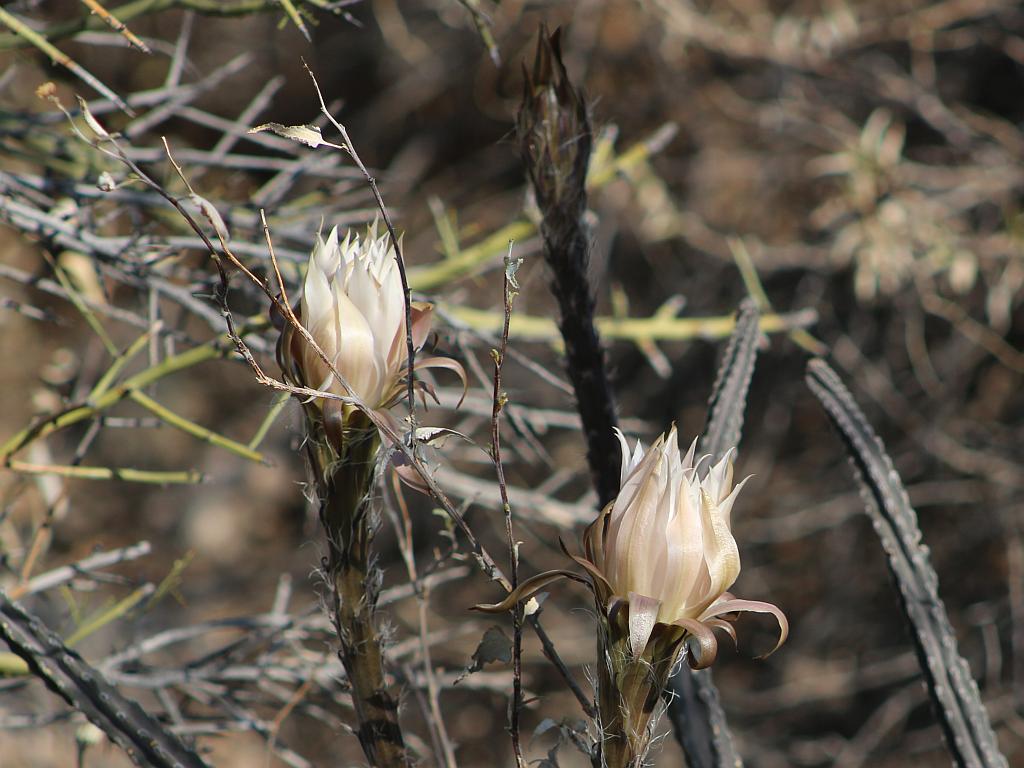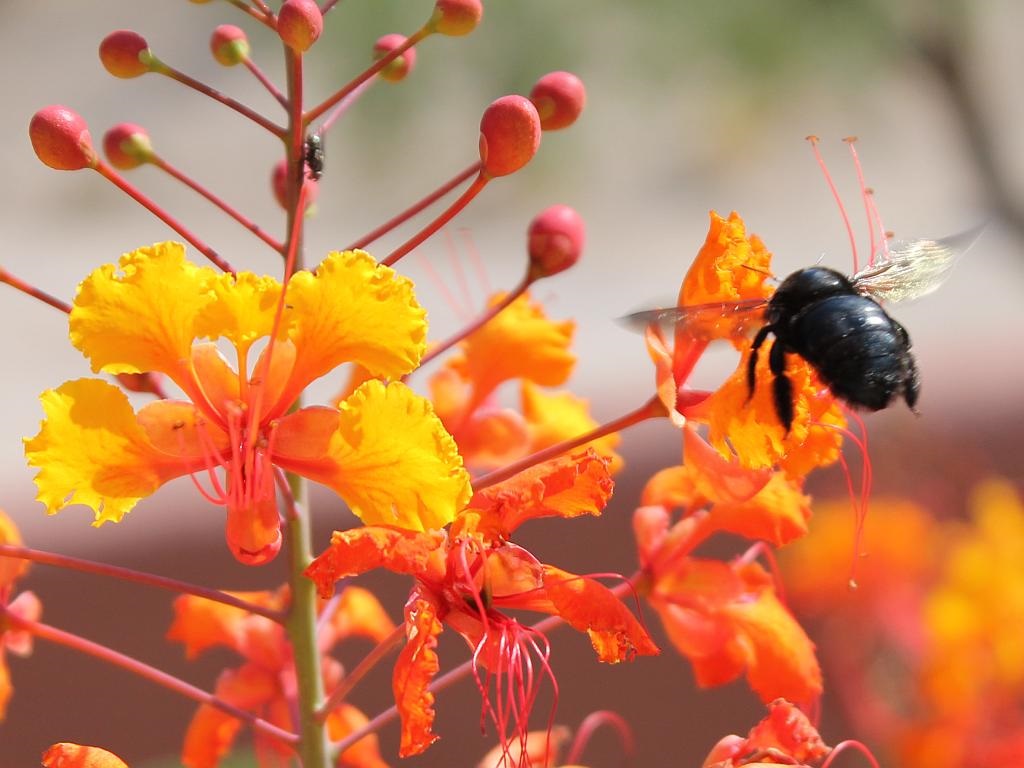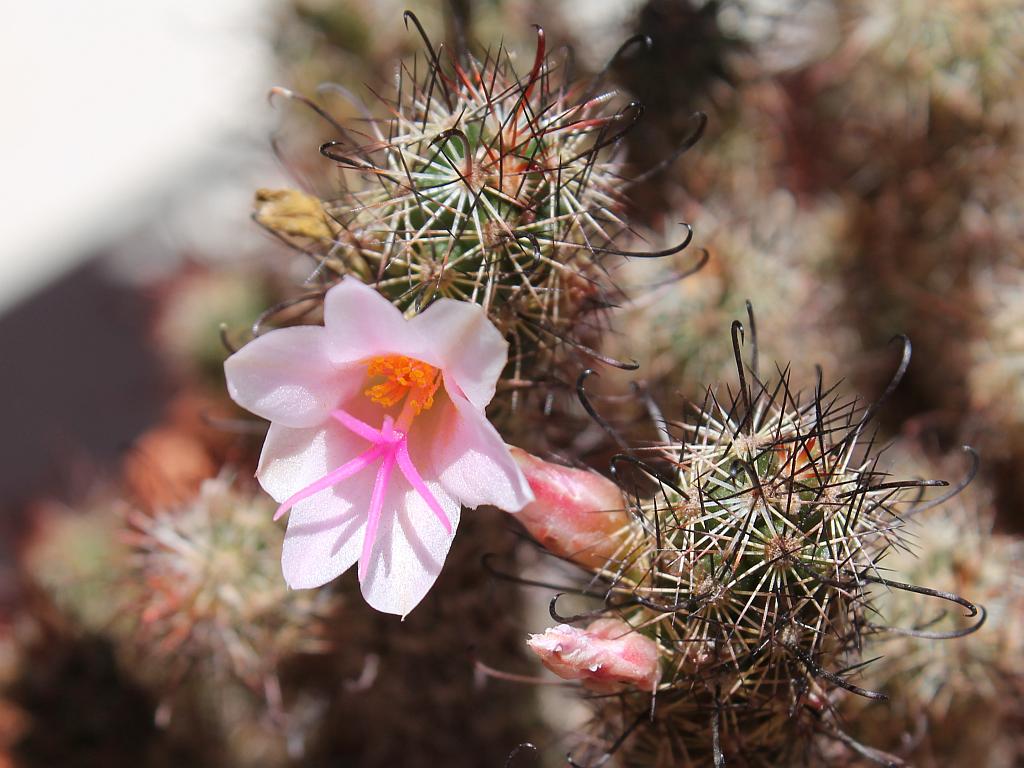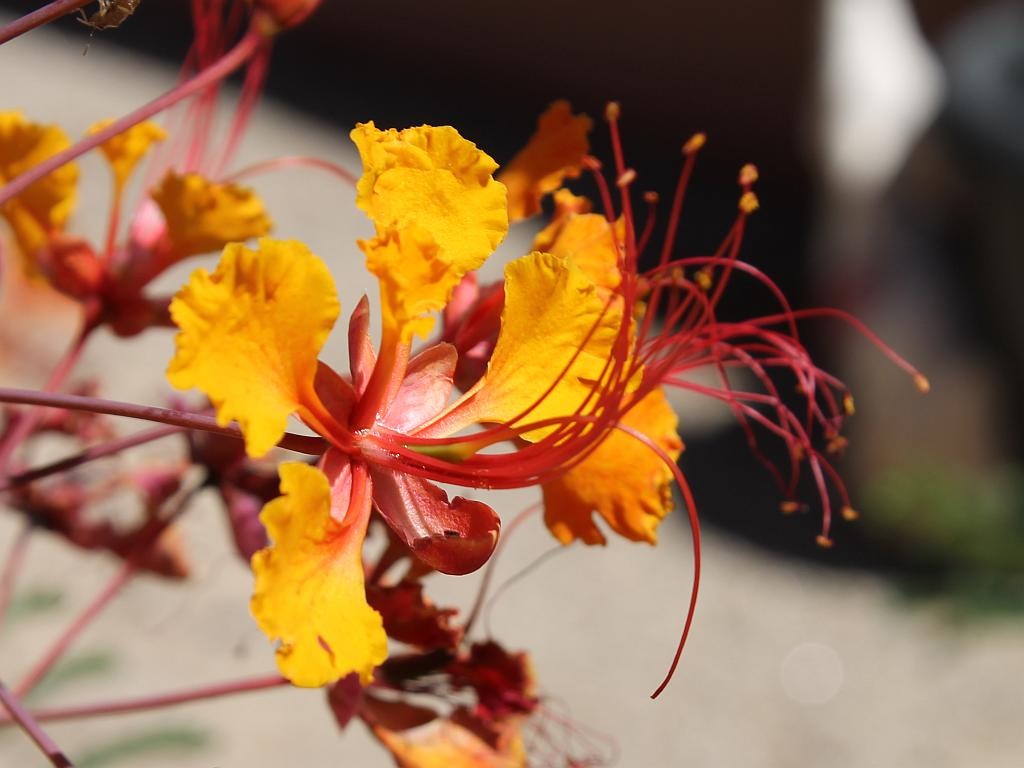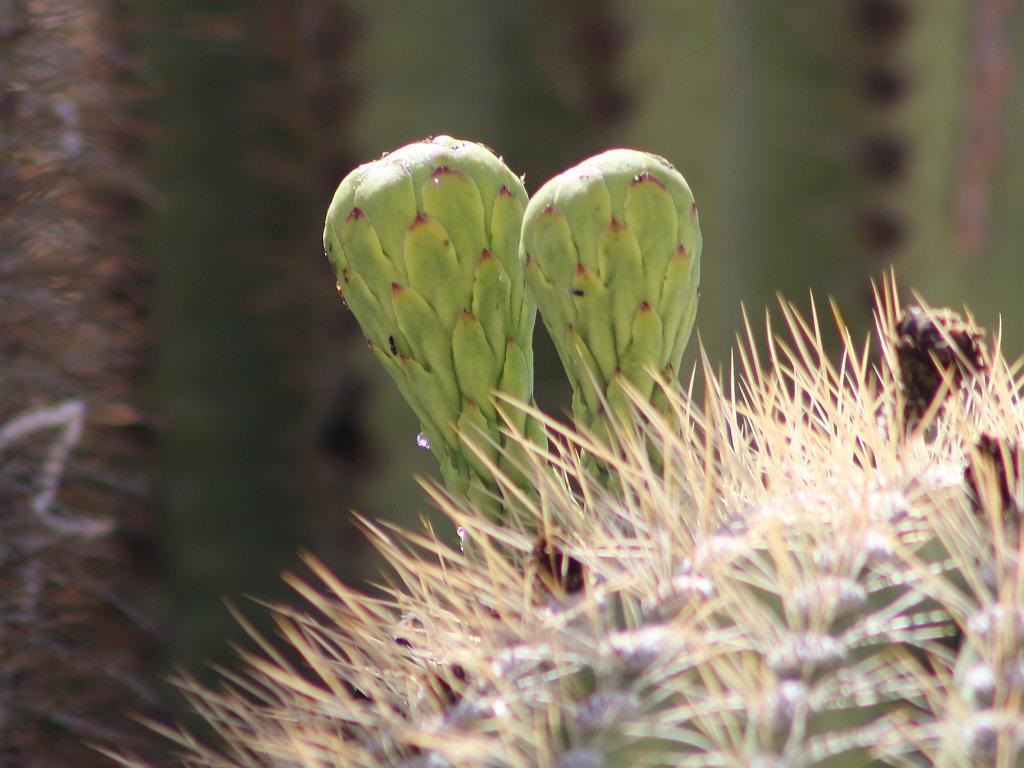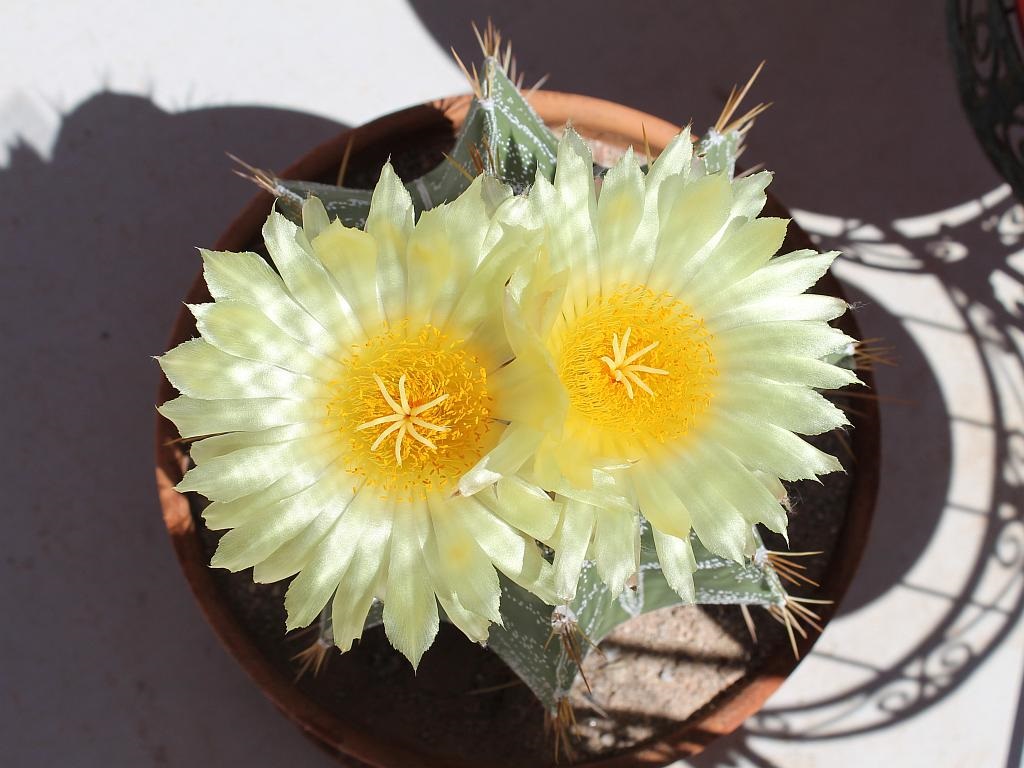
No, not a poker hand . . . These are three flower stalks currently growing on the native “Queen of the Night” (Peniocereus greggii) cactus up on the hill behind our house. This cactus is growing under a palo verde tree up near the northeast property corner.
The location of the cactus is unfortunate for us since it is a steep climb to get to the level where it is growing. Moreover, since these bloom exclusively at night, we likely won’t be able to see them open because of the following factors:
- steep night time climb where no lighting exists
- nocturnal critters like crotalus (rattlesnake), coyote, javelina and mountain lion can be present in our semi-rural patch of desert.
There are a couple of other Peniocereus greggii growing in more accessible locations lower on or near our property, but neither of them have mature flower stalks at this time. Damsel managed to photograph open flowers on one of them last year.
I am going to hike up there each morning to try and keep an eye on this cactus in order to possibly catch an early morning-after photo or two before the flowers eventually fade. Wish me luck.
Click on the image to enlarge.
UPDATE (20 Jun 2016): I went up on the hill this morning at about 0830 and found that two of the queen buds had bloomed overnight and were closing in the morning sun. The third flower should open after dark this evening. Click on the image to enlarge.
